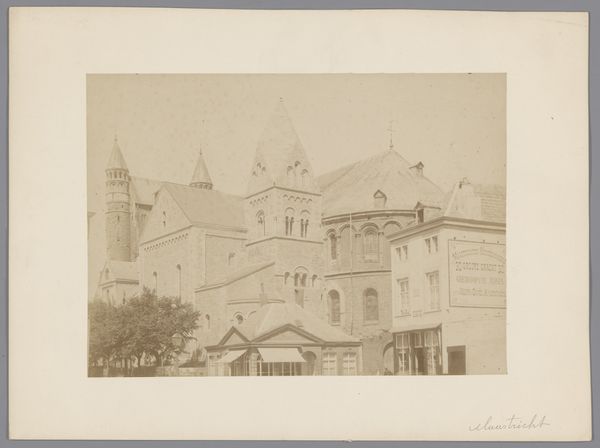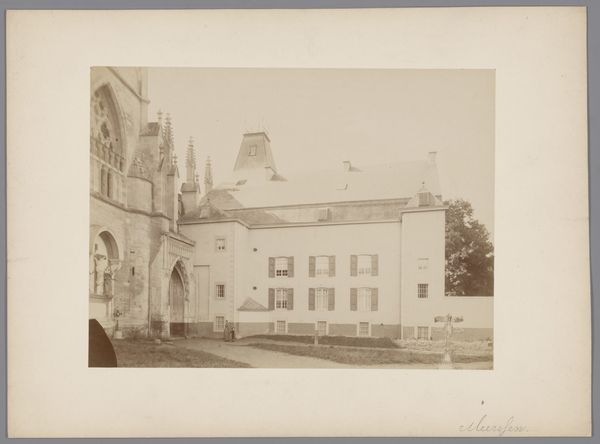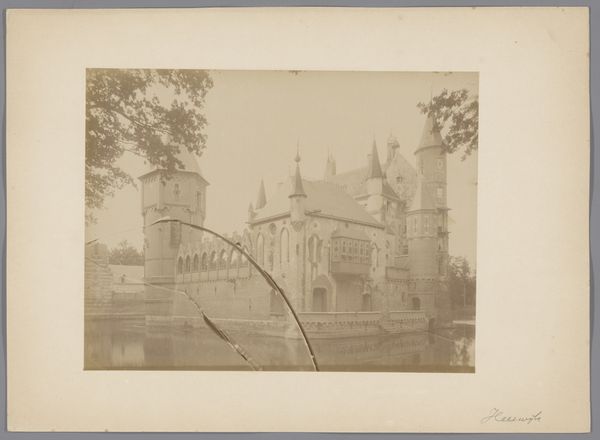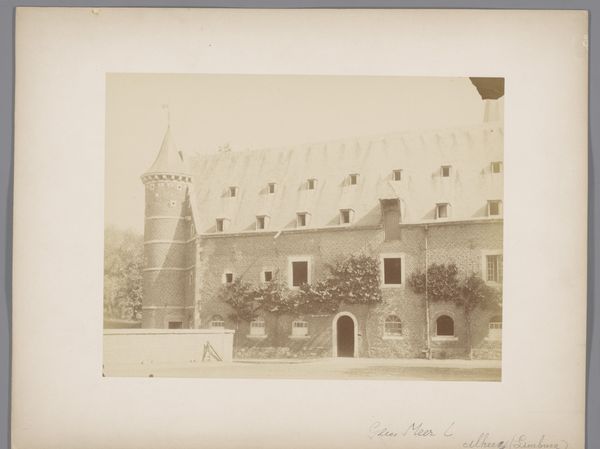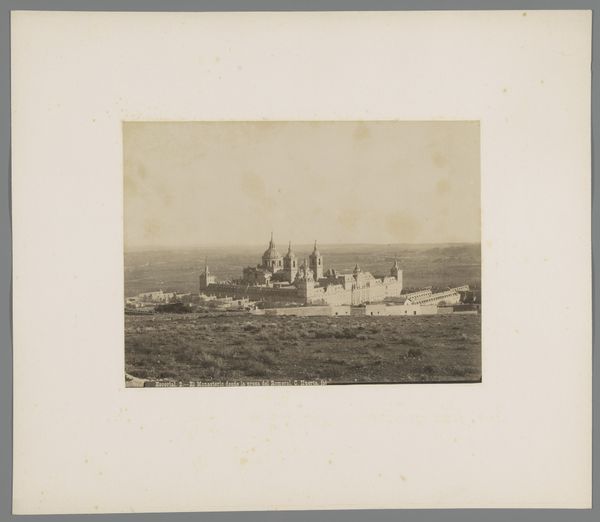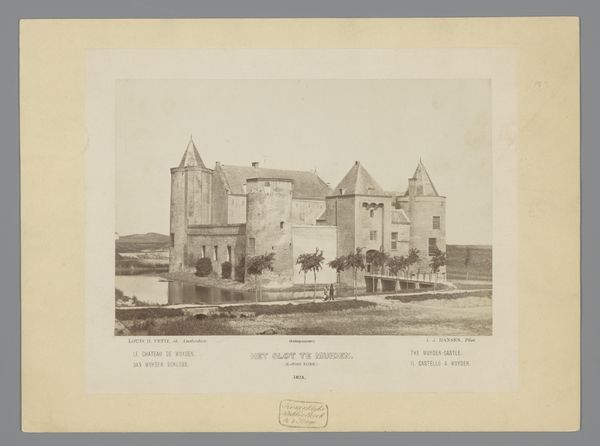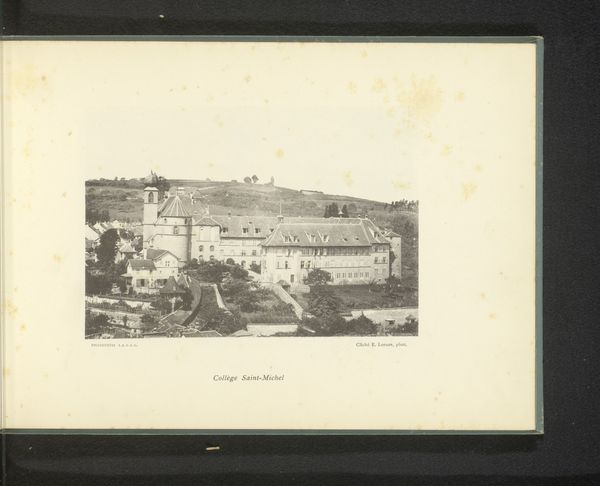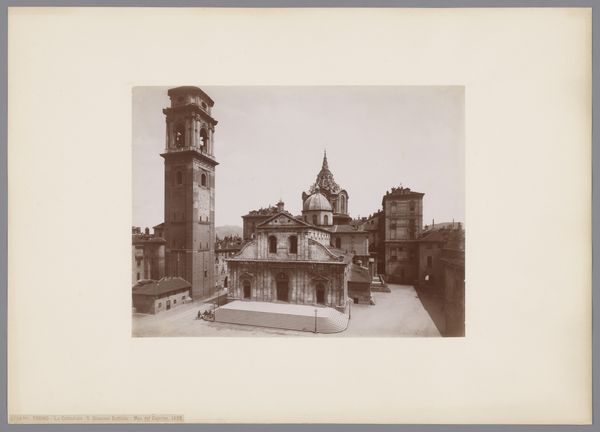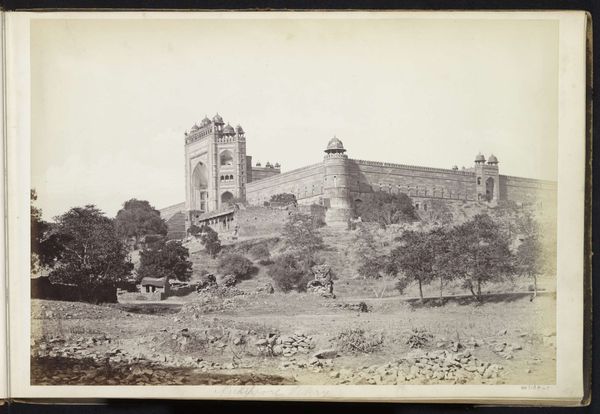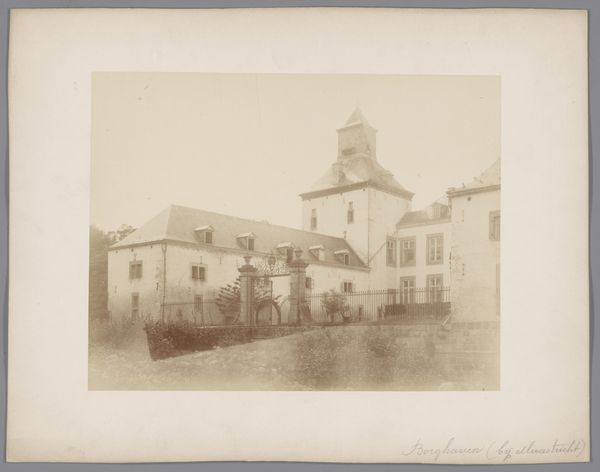
Gezicht op de kathedraal van Saint-Louis op de Byrsa in Tunesië c. 1884 - 1900
0:00
0:00
photography, gelatin-silver-print, architecture
#
photography
#
orientalism
#
gelatin-silver-print
#
cityscape
#
architecture
Dimensions: height 247 mm, width 317 mm
Copyright: Rijks Museum: Open Domain
Editor: We’re looking at a gelatin silver print titled “View of the Cathedral of Saint-Louis on the Byrsa in Tunisia” from around 1884-1900 by J. André Garrigues. It's quite a grand, imposing architectural photograph, almost like a fortress rising out of the earth. What structural elements strike you the most? Curator: Immediately, the stark geometry. The rigid lines of the cathedral walls contrast dramatically with the organic forms of the landscape upon which it stands. Note the careful balance the photographer creates between the horizontality of the base and the soaring verticals of the towers. How does that relationship impact your reading? Editor: I see how the solid base grounds the more elaborate towers. It makes the height even more emphasized. I hadn’t really focused on the horizontal plane as being so intentional. Curator: Precisely. Then consider the monochromatic palette. The tones of sepia render form through subtle gradations, rather than through dramatic coloristic effect. This emphasizes the form, line, and light within the composition. Do you agree? Editor: I think I do. If the sky had any clouds, it could detract. Are there any visual details I might have overlooked? Curator: Observe the subtle variations in texture across the surface of the building. The photographer has masterfully captured the roughness of the stone, and in opposition to the smoother rendered sky. These contrasts are critical for appreciating its formal achievement. It reminds the viewer about what they can see through photography compared to another artistic medium like painting. Editor: Looking at it again, I see those textures creating layers. It really highlights the complexity inherent in something that appears so simple at first glance. Curator: Yes, understanding the intentional arrangements of compositional elements—form, line, tone—reveals this complexity, and demonstrates its intrinsic value as a work of art. I have gained a new appreciation for the use of simplicity. Editor: And I was able to consider that a photographer chooses where you look by orchestrating darks, lights, lines and forms!
Comments
No comments
Be the first to comment and join the conversation on the ultimate creative platform.
